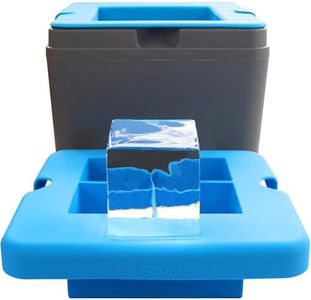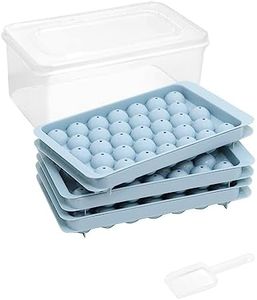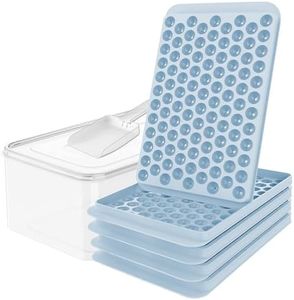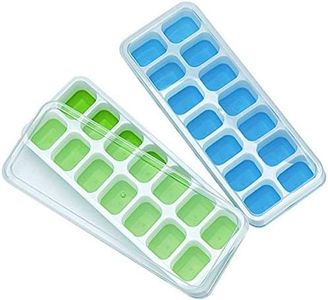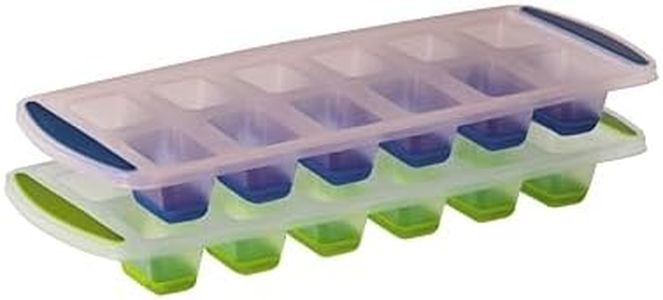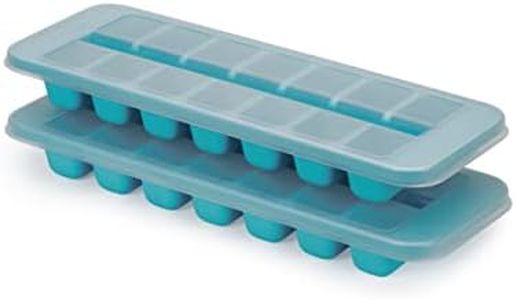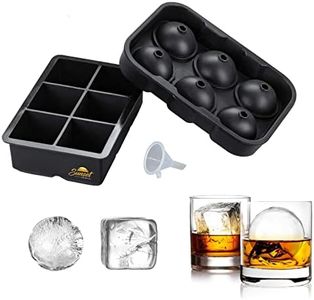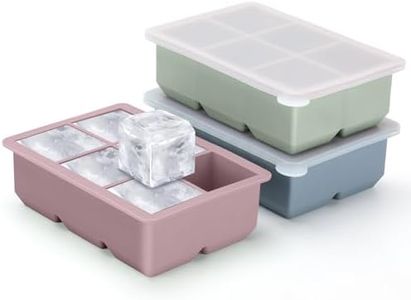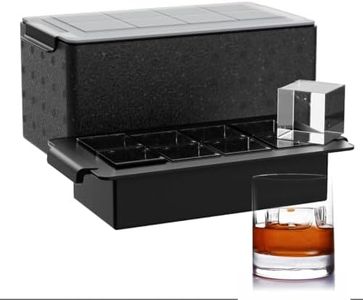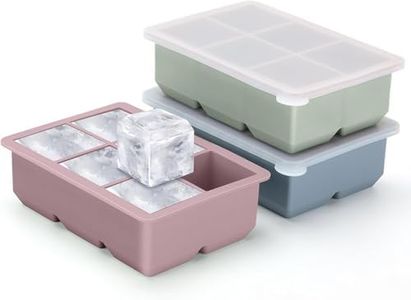We Use CookiesWe use cookies to enhance the security, performance,
functionality and for analytical and promotional activities. By continuing to browse this site you
are agreeing to our privacy policy
10 Best Ice Cube Trays
From leading brands and best sellers available on the web.Buying Guide for the Best Ice Cube Trays
Choosing the right ice cube tray may seem simple, but a little thought goes a long way in finding a style that fits your household’s needs. Ice cube trays come in various sizes, shapes, and materials, and even small features can make a big difference in how easily you use, clean, and store them. Think about how much ice you need, how you’ll be using it, and how convenient you want the process to be. A good ice cube tray should fit well in your freezer, be easy to fill, and let you remove the cubes without too much fuss.MaterialMaterial refers to what the ice cube tray is made from, with common options being plastic, silicone, and sometimes stainless steel. This matters because each material affects how easy it is to remove the ice and how durable the tray will be. Plastic trays are lightweight and affordable but can get brittle over time and might crack. Silicone trays are flexible, which makes getting the cubes out much easier, and they usually last longer. Stainless steel trays are very sturdy and resistant to odors but are heavier and often more expensive. If you want easy release and simple cleaning, silicone is a solid choice. If you prefer a firm tray or more classic style, plastic may be better, while steel is ideal if longevity and less plastic are a priority for you.
Cube Size and ShapeCube size and shape determine what your ice will look like and how quickly it chills drinks or melts. Standard trays make smaller cubes that freeze fast and work for most drinks, but larger cubes or spheres are popular for cocktails as they melt slower and don't water down drinks as quickly. Some trays make novelty shapes, which are fun for parties or themed events. If you often fill big pitchers or like slow-melting ice for spirits, look for larger cubes or specialty shapes. For everyday use, standard small cubes are practical and versatile.
Tray CapacityTray capacity means how many cubes one tray can make at a time. Trays range from as few as six large cubes to over twenty small ones. This is important because it affects how much ice you can have ready at once; larger households or people who use lots of ice may want trays with higher capacity or multiple trays. If you only need a few cubes for occasional drinks, a smaller tray will save freezer space. Match capacity to how much ice your household typically uses in a day or how often you want to refill trays.
Ease of ReleaseEase of release is about how easily you can get the ice cubes out when you need them. Some trays require twisting or tapping, while flexible materials allow you to pop cubes out with less effort. If you have trouble using force for twisting or want a smooth process, silicone trays with soft, flexible bottoms are easiest. Some plastic options have quick-release levers, which can also help. If you hate fighting with stuck cubes, focus on trays advertised as easy-release or flexible.
Lid or CoverA lid or cover keeps the water level stable and helps prevent spills when moving the tray to the freezer. It also stops freezer odors from seeping into the ice and lets you stack trays or other food on top. This feature is handy if your freezer is packed or you want to avoid toppling the tray before it freezes. If you have an overstuffed freezer or are sensitive to off-flavors in your ice, a tray with a good-fitting lid is a good choice.
Cleaning and Dishwasher-FriendlinessSome trays are safe to pop in the dishwasher, making cleaning easier, while others must be washed by hand. Silicone and certain plastics tend to be dishwasher-friendly, while cheaper plastic may warp. If convenience is important or you use the trays for more than just water—like freezing juice or herbs—check for dishwasher-safe labels. If you don’t mind washing by hand, you’ll have more options.
Stackability and StorageStackability refers to how easily you can put several trays on top of each other without sticking or tipping over. Some trays are designed to stack neatly, often with lids or special grooves. If freezer space is at a premium or you want to make a lot of ice ahead, choose trays advertised as stackable. If you only use one tray at a time or have plenty of freezer space, this is less important.
